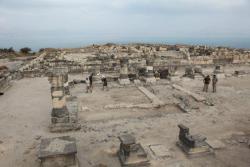
Perched atop Sussita Mountain near the eastern bank of the Sea of Galilee, the city’s ruins afford a commanding view of this ancient lake. One of the ten cities of the Decapolis, it was a Roman/Hellenistic enclave in ancient Palestine during the height of the Roman Empire. Known then as Antiochia Hippos, its ruins are now being explored and excavated by teams of archaeologists, students and volunteers. To date, they have unearthed a wealth of artifacts and an array of Hellenistic, Roman, Byzantine, and Ummayad structures spanning a period of a thousand years—from the 2nd century BCE to the 8th century CE. Among the excavated remains are toppled columns and damaged structures, evidence of a violent earthquake that destroyed the city in 749 CE. It was the end of Antiochia Hippos. Its citizens abandoned it, never to return.
But excavators have recently uncovered evidence of another, earlier earthquake at Hippos. This one, occurring in 363 CE, left the city seriously damaged, but recoverable. During the last season of excavations the team uncovered a number of crushed human skeletal remains beneath a collapsed roof of the city Basilica, considered the largest structure of the city and the main public building and market center. Among the skeletal remains were those of a woman with a golden, dove-shaped pendant. The skeletons were dated to the earlier, 363 earthquake because of coins found between the Basilica floor and other architectural elements. At another location, they discovered evidence of the same earthquake destruction within a Roman bath complex. “Under the debris of the 363 earthquake we found part of a Roman statue. Superb Roman craftsmanship in marble, but just the right leg of a muscular man leaning on a trunk was found,” Eisenberg told Discovery News. Examination of the statue remains suggested a height of over 6 feet, but there were no indications related to the identity of the subject.
__________________________________
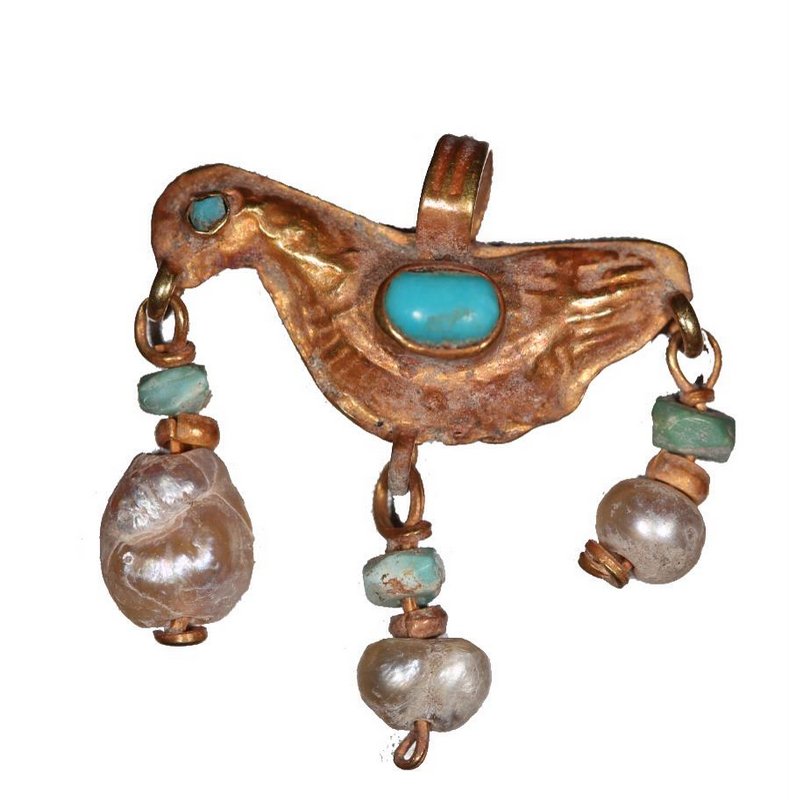 The gold pendant found with the skeletal remains of a woman under the earthquake-caused debris of the Basilica of Antiochia Hippos. Credit Michael Eisenberg and the Hippos-Sussita Excavation Project
The gold pendant found with the skeletal remains of a woman under the earthquake-caused debris of the Basilica of Antiochia Hippos. Credit Michael Eisenberg and the Hippos-Sussita Excavation Project
____________________________________
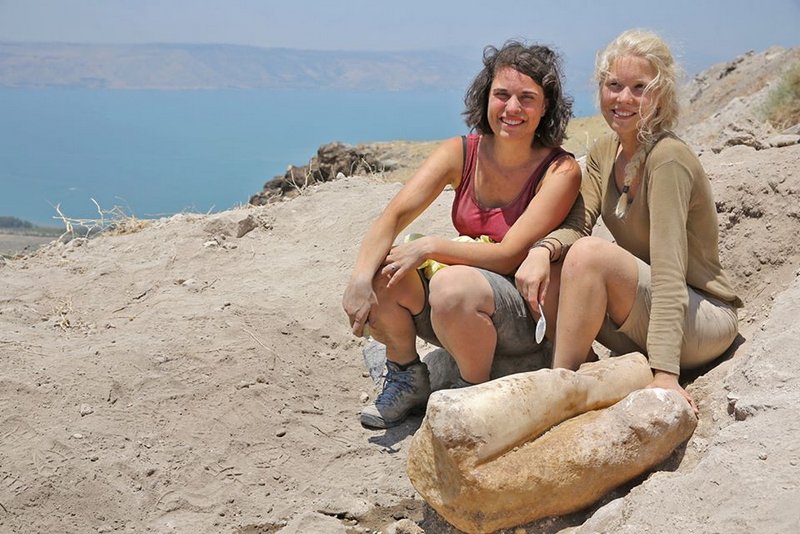 Near these beautiful excavators, the right leg of the Roman statue found in the earthquake destruction of the Roman bathhouse. Credit Michael Eisenberg and the Hippos-Sussita Excavation Project
Near these beautiful excavators, the right leg of the Roman statue found in the earthquake destruction of the Roman bathhouse. Credit Michael Eisenberg and the Hippos-Sussita Excavation Project
_________________________________
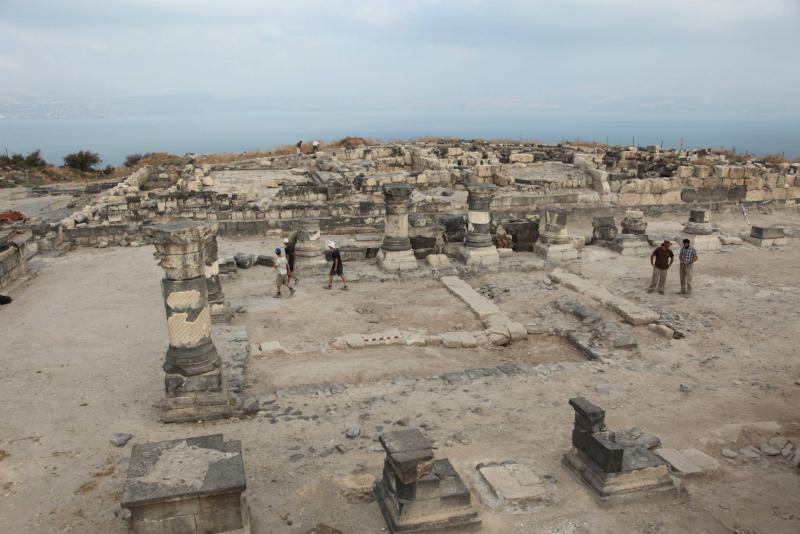 The excavated remains of the Roman Basilica. Credit Michael Eisenberg and the Hippos-Sussita Excavation Project
The excavated remains of the Roman Basilica. Credit Michael Eisenberg and the Hippos-Sussita Excavation Project
________________________________
The excavations have shown that Hippos underwent a period of rebuiding after the first, 363 CE earthquake, but there was a gap of about 20 years before reconstruction occurred in at least some sections of the city. This was indicated by dozens of coins found in Byzantine construction about three feet above the Roman Basilica remains dated to about 383 CE., with no intervening reconstruction. The bathhouse was never rebuilt at its original location but another bathhouse was built later about 500 ft north-east.
The excavated evidence from previous seasons combined with the most recent finds are now beginning to paint a picture of a Roman/Hellenistic city before, during, and after two major earthquakes. “Finally the findings are coming together to form a clear historical-archeological picture,” Eisenberg told the Jerusalem Post.
Established initially by the Seleucids as a Greco-Roman enclave, Antiochia Hippos once controlled two port facilities on the lake and its surrounding countryside. Hippos was part of the “Decapolis“, a group of ten cities in Roman Palestine that were maintained as Greco-Roman cultural islands in the Near East. The damage the latest, 749 CE earthquake caused Hippos was so severe that it was left to the ages with no succeeding settlement and, coupled with its relative isolation and enduring basaltic construction, it was preserved much like it was left in the 8th century for today’s archaeologists to explore. Since the year 2000, a team of archaeologists, specialists, students and volunteers from the Zinman Institute of Archaeology, University of Haifa and other institutions have been excavating the site.
_______________________________
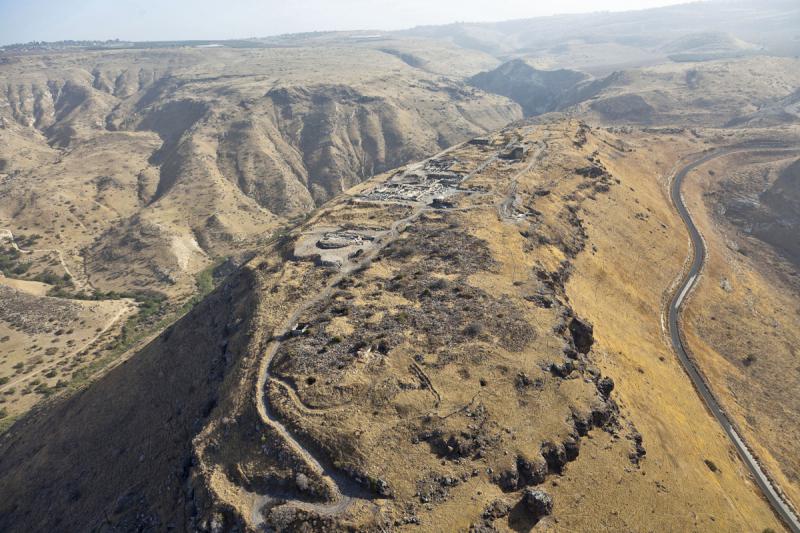 Above and below, aerial views of the ancient site of Hippos-Sussita. Credit Michael Eisenberg and the Hippos-Sussita Excavation Project
Above and below, aerial views of the ancient site of Hippos-Sussita. Credit Michael Eisenberg and the Hippos-Sussita Excavation Project
_______________________________
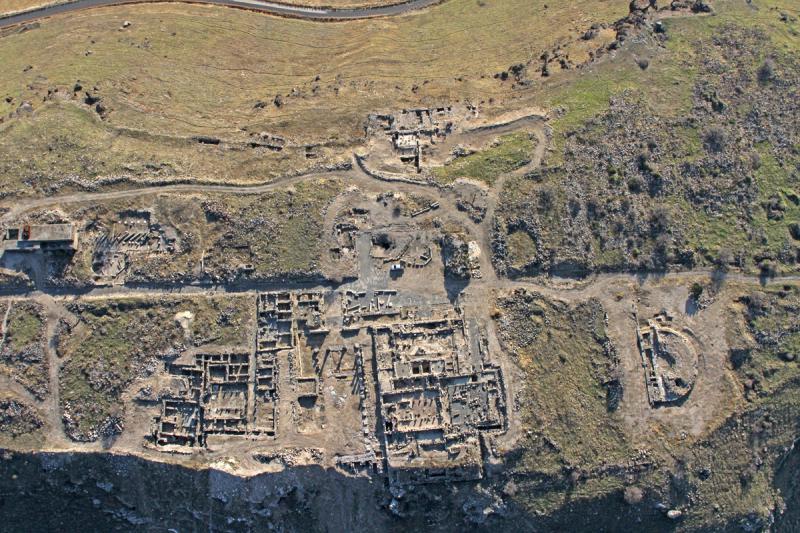 ____________________________________________
____________________________________________
Eisenberg hopes the team will find additional parts of the statue in the upcoming 2015 season once they clear more debris left by the earthquake. He and his team will also continue excavations at the Basilica, the Bastion (fortification), the Roman-Byzantine southern bathhouse, and the west decumanus maximus (the main east-west road of the city), in addition to preservation work on structures that have previously been exposed through the excavations.
More information about the Hippos-Sussita Excavation Project can be acquired at their website. They are currently calling for new particpants for the summer 2015 season, which begins July 19, 2015.
A detailed feature article about Hippos-Sussita and the excavations can also be found in Popular Archaeology Magazine.
____________________________________
Read about the most fascinating discoveries with a premium subscription to Popular Archaeology Magazine. Find out what Popular Archaeology Magazine is all about. AND MORE:
On the go? Get the smartphone version of Popular Archaeology as an app or as an ebook.
Popular Archaeology’s annual Discovery Edition eBook is a selection of the best stories published in Popular Archaeology Magazine in past issues, with an emphasis on some of the most significant, groundbreaking, or fascinating discoveries in the fields of archaeology and paleoanthropology and related fields. At least some of the articles have been updated or revised specifically for the Discovery edition. We can confidently say that there is no other single issue of an archaeology-related magazine, paper print or online, that contains as much major feature article content as this one. The latest issue, volume 2, has just been released. Go to the Discovery edition page for more information.






